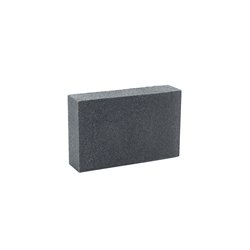You'll likely have come across the term "NEM pockets" when delving into the world of model railway couplers. But what...
No products
Product successfully added to your shopping cart
There are 0 items in your cart. There is 1 item in your cart.
Search Tips
Why does my train keep derailing?
There are many reasons why model trains derail, sometimes it's a track fault, sometimes it's because the train isn't designed for a particular radius, sometimes there's a fault with the model and sometimes our expectations are simply too high for our little metal pals. The one factor that is common to all model train derailments is that everyone suffers from them!
Here we look at some of the more common reasons for model train derailments.
Radius and expectations
In real life trains have something called a route availability, this is where each railway line has been assessed for gradient, the radius of curves, loading gauge of bridges and what speed/weight the tracks and track-bed can support. If the specifications of an engine or coach don't fall within the tolerances of the route then it will not be permitted on it. Although not all of these factors are likely to be an issue on our layouts, we do often expect a perfect performance from all of our rolling stock on all of our tracks at all times.
This is most evident in two main areas, on tight points and tight radius curves. We often plan our track-work with aesthetics in mind but seldom give consideration to what rolling stock has to use it, even express points if scaled up would be incredibly tight for even the shortest of tank engines to negotiate, add to this scale speeds that are often ferociously quick and you have a recipe for disaster.
Wheel gauge out of tolerance
One of the more common reasons for derailments is the model's wheels being out of gauge. Often the wheels on your rolling stock are held in place on the axle by nothing more than adhesive or pressure, after time and with the help of a few knocks or bashes they can shimmy along the axle, the loss of gauge is more than enough to cause derailments. This problem can easily be rectified with the use of a back to back gauge which will allow you to reset your wheels to the correct gauge.
Right points for the right engine
Not all points are suitable for all engines, most of the time you will get away with it if enough care is taken whilst traversing the points, however, small tight radius curves can present quite a challenge for large locomotives with complicated wheel arrangements.
Couplings
Couplings on model trains work best when they are used with other couplings of the same type, to minimise the chance of a derailment check that your couplings are not only of the same type with the same sized D, but also that they sit at the same height when coupled. A lot of modellers also don't realise that couplings come with different length hooks and draw-bars, this is to facilitate the close-coupling of rolling stock for added realism, but an accidental mix up of lengths can cause derailments too, so check if the slack is taken up evenly between the couplings when the train starts to move.
Coupling hooks have a little arm hanging down from them, this is a counterweight that helps the hook drop back into place when coupling to another carriage or wagon, it is also used to uncouple two items of rolling stock by some automated systems, in time NEM couplings can sag a little, and in these circumstances, the counterweight has been known to catch on the crossing rails of points, so it's always worth a check if you are getting derailments on or around junctions.
Train too long for curve
If you have a curve that continues past 90 degrees, then any train longer than the curve itself will have contradicting forwards and backwards forces acting upon it, the longer the train and further the curve progresses, the more the forces will be until eventually the middle of the train will decide to take a short cut. A similar effect will be realised if traversing a long series of points, put simply, your train will always want to take the straightest route whether there's a track there or not!
Ballast stuck in frogs
Obvious but common, check rails, point-frogs and blades for ballast that has come loose!
Loose tyre
Some model steam locomotive's tenders have plastic wheel centres with metal tyres, these are renowned for coming loose but have no way of falling off and therefore alerting you to a problem. If it is a tender engine that you are having problems with, check the condition of your tender's wheels.
Different codes of track
You can get track with standard or fine-scale rails, the latter being more realistic to the prototype, however, older rolling stock with larger wheel flanges don't really work very well on finer track, make sure you have not accidentally mixed the two as a derailment is almost inevitable.
Unfortunately, there are many many more reasons why occasionally our model trains will decide to make a break for freedom, the ones talked about above are merely the most common, but, with a little bit of thought for what our miniature locos have to deal with we can minimise the chances of disaster and have happier running sessions all around. Good luck!
Click here to receive the tips weekly in your mailbox. You can unsubscribe at any time.










